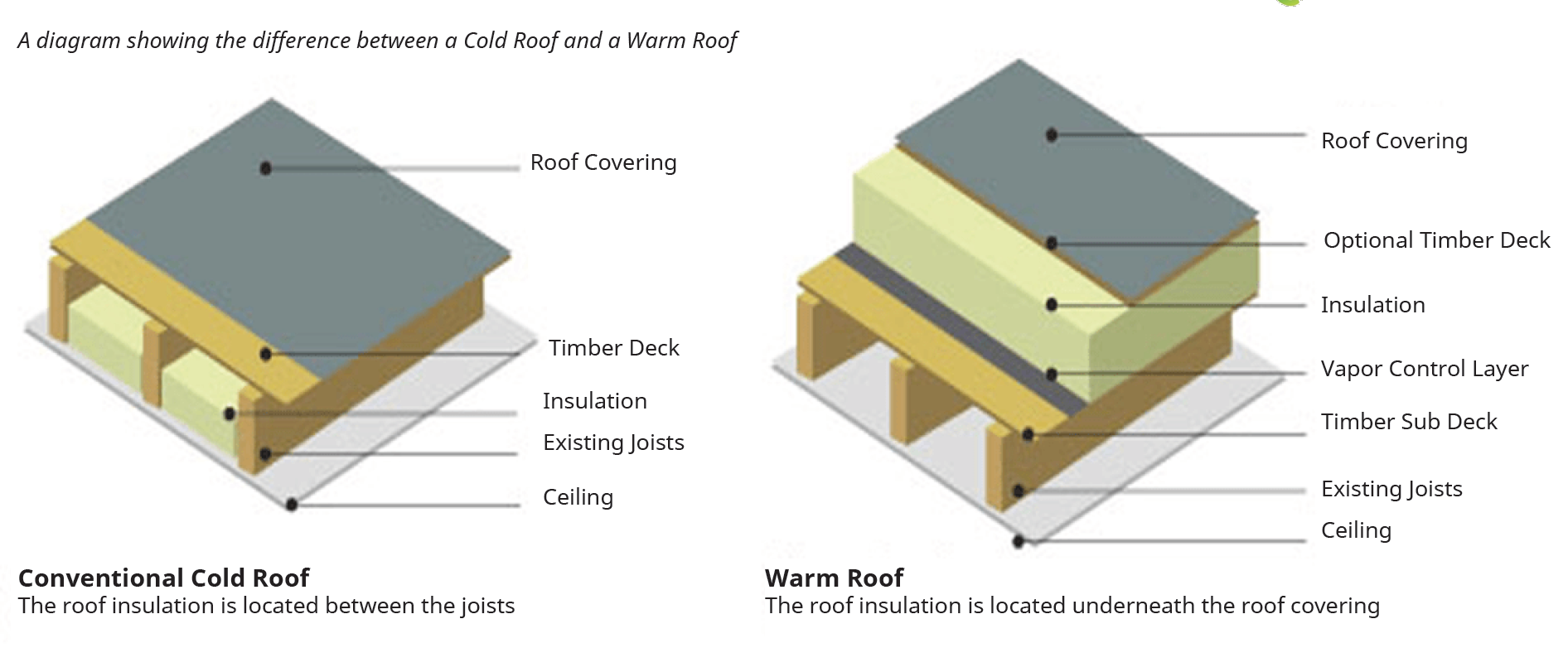In this article we'll talk about vapour control layers. We'll focus on their use in pitched and flat roofs, exploring what vapour control layers are, when they're needed and why.
Before we get started, it's worth noting that we encounter a lot of confusion when it comes to vapour control layers and other products designed to tackle condensation. Vapour control layers are not the same as breather membranes or vapour barriers, yet we often hear the terms used interchangeably. We'll get to the differences in a bit, but for now, keep in mind that it's vapour control layers we're covering here.
Surface condensation forms when warm, moisture laden air meets a cool surface with a temperature at or below dew point. At dew point, the atmosphere is saturated and its ability to hold moisture as vapour is reduced, causing moisture to condense and turn to liquid. For a more detailed description of the condensation process, take a look at our article on Condensation in Domestic Buildings.
In a warm roof, insulation is positioned above the roof structure to keep the entire roof warm. This is in contrast to a cold roof where insulation is installed below the roof structure, leaving a cold void. In both of these designs, insulation installed above the living space should mean warmer temperatures on ceiling surfaces and therefore less condensation. So problem solved right? Not quite...

In the winter months, when the outside temperature is significantly cooler than the internal temperature, the fabric of a building becomes gradually cooler towards the outside (the reverse is generally true in summer months). At some point between interior and the exterior, the dew point temperature is reached, at which point condensation occurs. When condensation happens inside the fabric of the building in this way, it is referred to as interstitial condensation.
Interstitial condensation forms within the fabric of a building and can lead to serious structural issues.
So the major issue with moisture entering the roof space is condensation, which in excessive quantities can have disastrous effects, causing structural timber to rot, metal to corrode and the formation of mould that can lead to respiratory illness.
With a warm roof build-up, a vapour control layer is always required on the warm side of the insulation to prevent excess vapour entering the roof build up, becoming trapped and condensing. For cold roofs, the effects of water vapour entering the roof structure are often mitigated with ventilation measures. A cold roof space that has sufficient ventilation in place will allow atmospheric pressure to equalise to prevent condensation.
Vapour control layers reduce the amount of vapour that can pass into the fabric of a building, limiting it to levels where condensation is less likely to form. This is in contrast to vapour barriers that are impermeable and allow no vapour to penetrate.
It is because of their controlled diffustion of vapour that we recommend their use in warm roof applications in place of impermeable vapour barriers.
Our team are on hand to provide advice and guidance with roofing related queries. Contact us on 0208 132 8112 or email roofing@djcs.co.uk